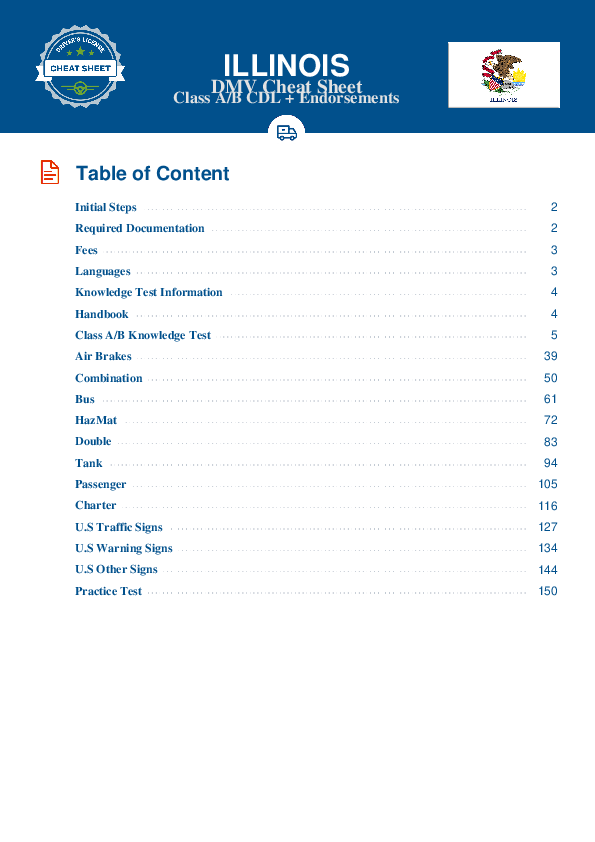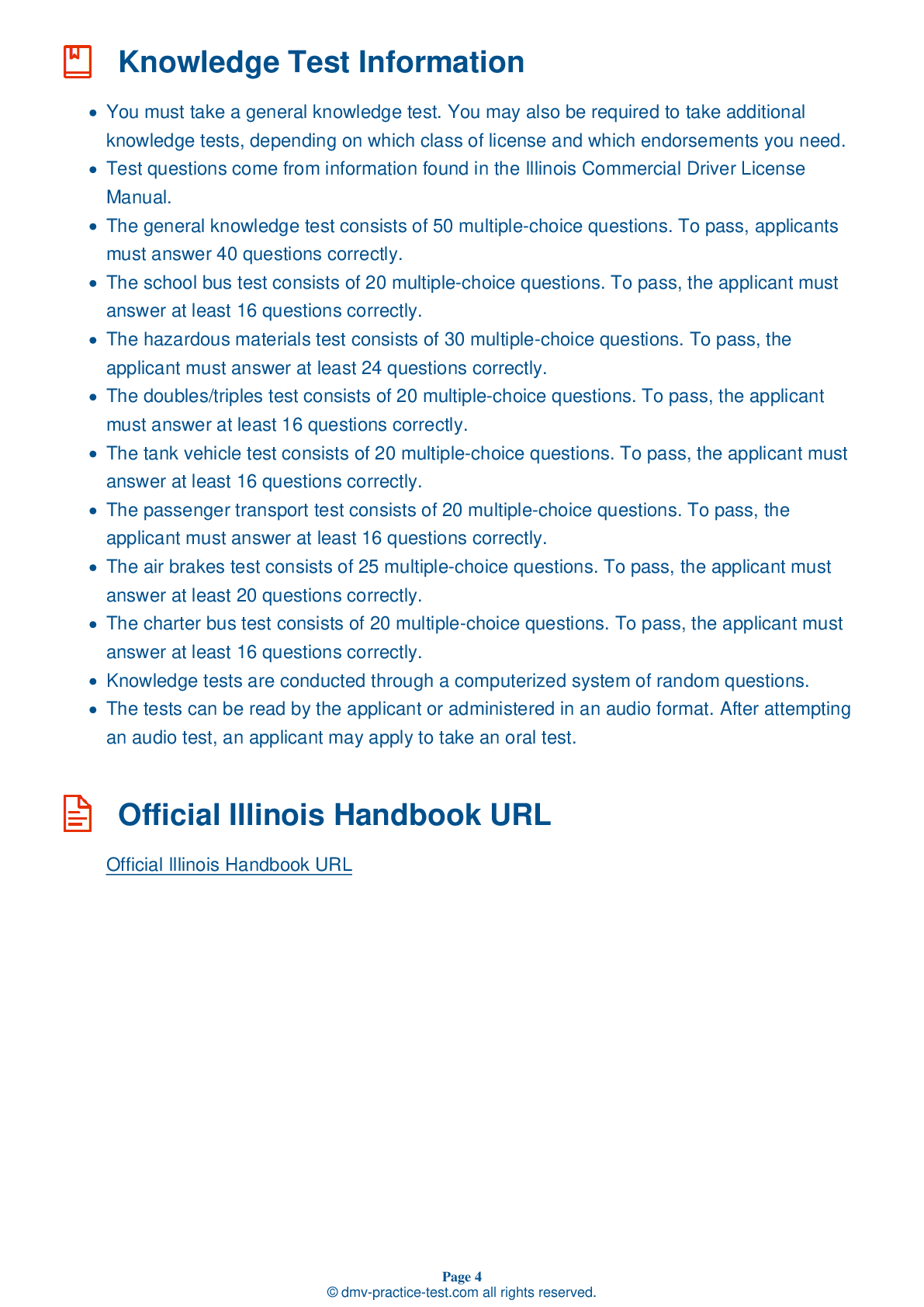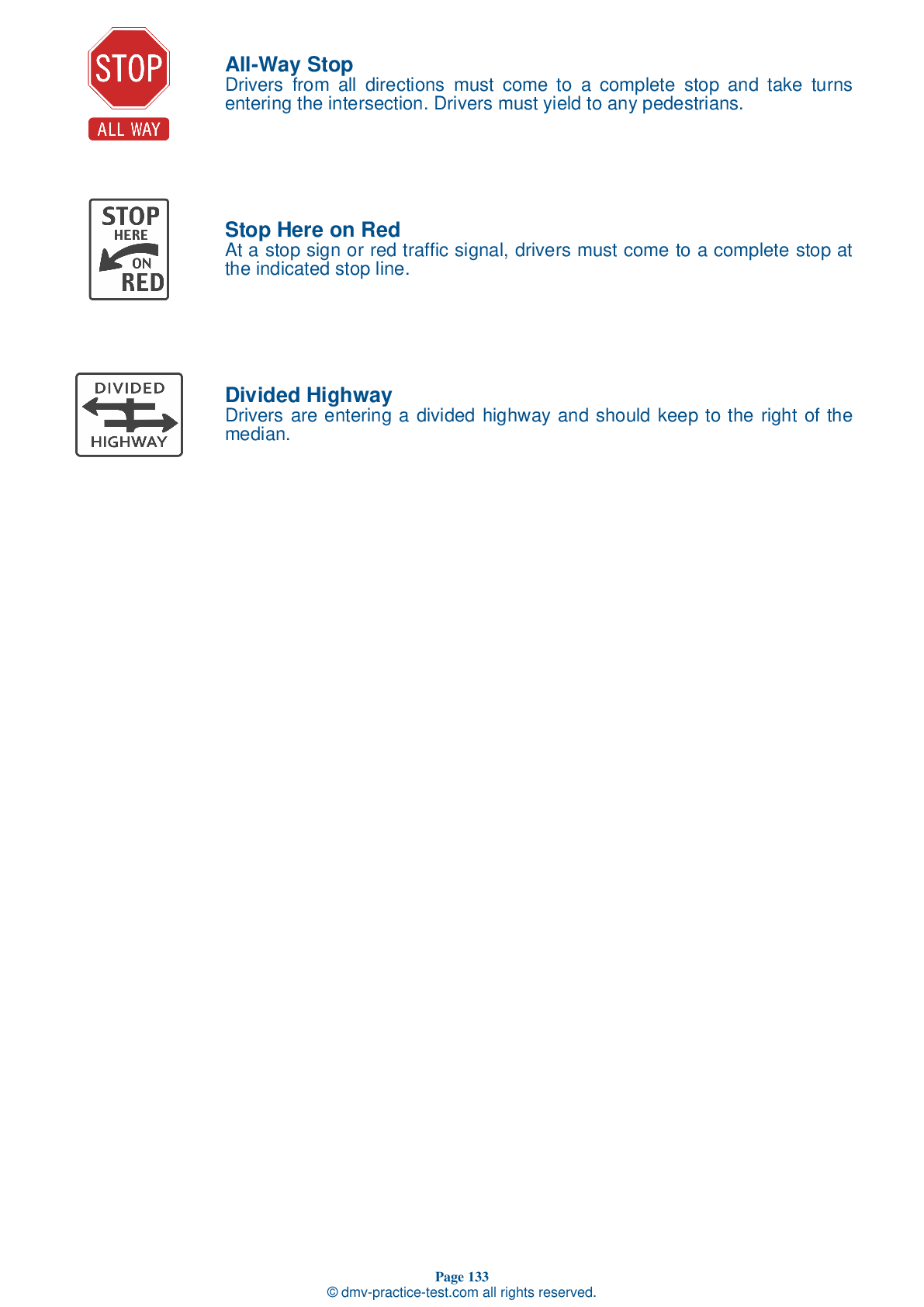Air Brakes #2
Air Brakes Endorsement Test | Illinois 2025 #2 Page 4 of 4
Train for FREE online with our Illinois CDL air brake test. The official exam test consists of several obligatory parts, with all of them checking your knowledge of different blocks of road rules. If you need to obtain a IL Class A/Class B driver license in 2025, practice as much as possible. Free sample tests published on our website will help you check and improve your knowledge and boost your grades. Please bear in mind that the requirements for CDL may vary from state to state.
25
20
20
19 . To make a stop in a vehicle using air brakes, the driver should:
Pull out the brake knob.
To make a normal stop in an air-braked vehicle, push the brake pedal down and control the pressure so that the vehicle comes to a smooth, safe stop.
20 . What does the air compressor governor do?
Controls the temperature of the air leaving the air storage tanks.
In an air brake system, the air compressor governor controls when the air compressor pumps air into the air storage tanks.
21 . Water and compressor oil are usually found in the compressed air within an air brake system. Water and compressor oil:
Are not concerns.
Compressed air in an air brake system usually contains a certain amount of water and compressor oil. The water and oil can damage the brakes if left to accumulate in the system. Manually operated air tank drains must be opened daily to remove this build-up.
22 . Emergency brakes:
Are optional.
All trucks, truck tractors, and buses must be equipped with emergency brakes and parking brakes. These brakes must be held by mechanical force.
23 . How is the parking brake released?
By tapping the accelerator twice
In newer vehicles with air brakes, the parking brakes are controlled by a diamond-shaped yellow knob. Pull the knob out to activate the parking brakes and push it in to release them.
24 . In a dual air brake system:
One system is the main braking system and a second system is ready to be used if the first one fails.
A dual air brake system is made up of two separate air brake systems. The systems share a single set of brake controls, but each has its own air tanks, hoses, and lines.
25 . If using air tanks with manually operated drains, how often should you drain the tanks?
Once every 3,000 miles



